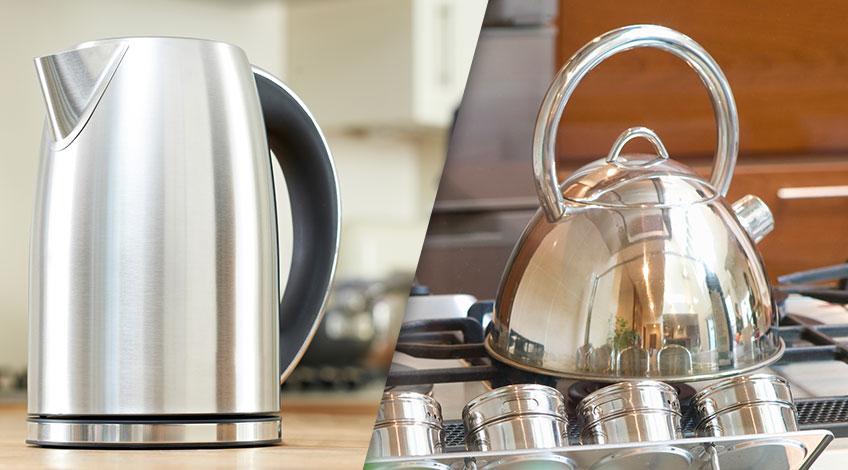Whether it’s endless cups of tea and coffee or boiling water for cooking, the average kettle ranks as one of the hardest-working small appliances in the kitchen. But how much does it cost to boil a kettle? And how much energy does a kettle use?
If you’re spending more time at home making hot drinks, you might be concerned that boiling your kettle multiple times a day is really adding to your bills. However, how much water you’re boiling and how powerful your kettle is will affect the cost – knowing by how much means you can decide how often you make a cuppa.
We’ve worked out how much you can expect to spend every time you put the kettle on – as well as ways you can save energy at home.
According to the Energy Saving Trust the national average price (as of November 2021) per pence/kWh of electricity is 20.06p. We have rounded it to 20p for illustration purposes.
Kettles show how much power their element uses in either watts (eg 3,000W) or kilowatts (eg 3kW) per hour. However, as you won’t be boiling a kettle for a solid hour, it’s a better idea to work out how much energy a kettle uses based on a smaller amount of time.
Heating larger amounts of water for cooking starts to become more expensive. Fill the example 3kW kettle up to its maximum of 1.7 litres each time and the boiling time for a full kettle rises to 4 minutes, and a cost of 4p every boil.

Image credit: Spike Powell
While most kettles use a similar amount of energy to boil the same amount of water, some are cheaper to boil because they’re more energy efficient. Some may not switch off immediately after reaching boiling point, while others have poor insulation that mean they lose heat externally, taking longer to reach boiling point.
The difference can be substantial over time. For example, one 3kW kettle can boil a litre in just over 2 minutes, while another may take as long as 2 minutes 30 seconds. This can mean a 0.5p difference every time you boil a litre of water.
‘We use our kettles more frequently than most other kitchen appliances,’ says Money.co.uk’s energy expert Ben Gallizzi. ‘In fact, the average UK household boils the kettle 1,500 times a year. If you’re in the market for a new kettle, look for rapid-boil models in the 2.5-3kWh range that can boil a single cup of water in under a minute as well as those with insulated casings that keep the water warmer for longer after boiling.’
Image credit: Lizzie Orme
Buy a kettle with these clever functions to help make using it as efficient as possible. Our best kettle picks will include many of these handy features.
A choice of temperature is a great option for those who enjoy pour over coffee, green tea and herbal tea. These drinks, as well as others, benefit from brewing with water at lower temperatures than boiling. And, as the water reaches the desired temperature sooner without needing to boil, your kettle will use less energy. Filling your hot water bottle with cooler water than boiling will also prolong its life.
Kettles without markers inside or on the water fill window mean you may boil more water than you need. Ideally, look for a model that has both litres and cups shown clearly so you can fill it quickly without overboiling.
Minimum fill amounts vary between models, meaning that even if you only want to make a cup of tea, you may need to consistently heat more water than you need. Minimum fills can be as much as 500-800ml, so look for those that allow you to boil as little as a single cup.
Image credit: Colin Poole
Limescale stops your kettle from working as efficiently as possible, meaning it’ll take longer to boil and use more energy. Keep the inside scale-free by descaling every four to eight weeks in a hard water area and every few months if your water is softer. Pop the kettle’s filter out regularly (if it has one) and rinse that, too. You don’t need to use chemicals – you can descale and clean a kettle with lemon, vinegar and other natural solutions.
While it might be a chore to work out how much water you need to fill a mug or pan, it’ll save you money in the long run to only boil what you need. Rather than do it every time, jot down how much water a few of your favourite cups use and which marker on the kettle this corresponds to.
‘Even though we drink a lot of hot drinks during the day, it’s still more energy efficient to boil what is needed each time than fill the kettle at the start of the day,’ explains Matt Manning, Group Carbon and Environment Manager at Currys. ‘This small trick can save around £6 a year.’